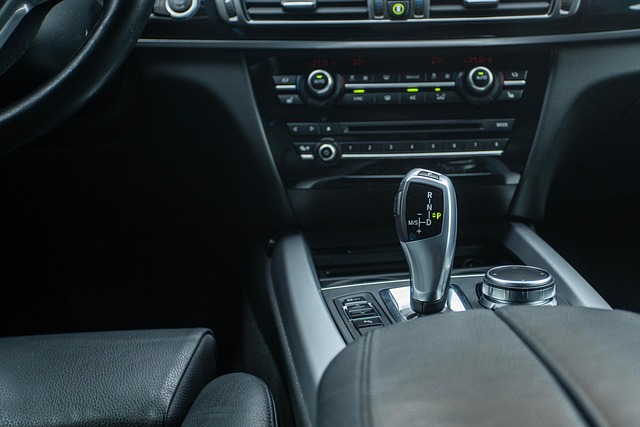Understanding auto insurance policies and rates is key to lowering your premium. Review your driving history, claims record, and vehicle details. Shop around for competitive quotes from multiple insurers. Adopt safe driving practices and use advanced driver-assistance systems (ADAS). Take advantage of discounts and bundle policies with the same provider. Enhance your vehicle's safety features and install protective devices. Adjust coverage limits based on risk tolerance and driving habits. Build a strong credit score to demonstrate financial reliability.
Looking to reduce your car insurance costs? Understanding how insurance policies and rates work is just the first step. This comprehensive guide walks you through effective strategies, from evaluating your driving history to shopping around for competitive quotes, implementing safe driving practices, and utilizing discounts. We’ll also explore modifications that enhance vehicle safety and tips for adjusting coverage limits. Additionally, discover the impact of a solid credit score on securing better rates. Follow these steps to lower your auto insurance premium today.
Understanding Your Auto Insurance Policies and Rates

Understanding your auto insurance policies and rates is the first step in figuring out how to lower your auto insurance premium. Insurance companies use a variety of factors to determine premiums, including your driving record, vehicle type and safety features, location, and claims history. By reviewing your policy and understanding these variables, you can identify areas where you might be overpaying or qualify for discounts.
For instance, if you have a clean driving record and drive a safe, well-maintained vehicle with anti-theft devices, you could lower your premium by choosing higher deductibles or opting for a pay-as-you-drive policy. Additionally, insuring multiple vehicles or bundling your auto insurance with other policies can often result in significant savings.
Evaluating Your Driving History and Claims Record

Evaluating your driving history and claims record is a crucial step in understanding how to lower your auto insurance premium. Insurers often consider your past performance behind the wheel when calculating rates. A clean driving record, free of accidents and moving violations, can significantly reduce costs. Regularly review your driving habits and address any areas for improvement to keep your premiums low.
Checking your claims history is equally important. The number of previous claims you’ve made can impact your insurance costs. If you have a history of filing numerous small claims, insurers may view you as a higher risk, leading to higher premiums. Keeping claims to a minimum and ensuring they’re for legitimate reasons can help maintain lower rates when shopping for auto insurance.
Shopping Around for Competitive Quotes

Shopping around for competitive quotes is a surefire way to lower your auto insurance premium. The process involves comparing offers from multiple insurers, ensuring you get the best coverage at the lowest price. Start by gathering information on your driving history, vehicle details, and desired coverage levels. Then, use online platforms or contact agents directly to request quotes. Remember, different companies weigh factors such as your credit score, driving record, and the make and model of your car differently.
By shopping around, you can find insurers who offer better rates for specific needs. Additionally, consider paying attention to policy exclusions and limitations to ensure the coverage aligns with your requirements. Regularly reviewing and updating your policy is a proactive step in managing costs and ensuring adequate protection.
Implementing Safe Driving Practices

Implementing safe driving practices is one of the most effective ways to lower your auto insurance premium. Drivers who exhibit responsible behavior on the road, such as adhering to speed limits, avoiding sudden stops and starts, and maintaining a safe following distance, are considered lower risks by insurance companies. This translates into lower premiums due to reduced claims and accidents. Regularly reviewing driving habits and making adjustments can significantly impact your insurance costs.
In addition to personal responsibility, certain safety features in your vehicle can also contribute to how much you pay for car insurance. Advanced driver-assistance systems (ADAS), like automatic emergency braking and lane-keeping assist, are becoming standard in many new models. These technologies not only enhance safety but also signal to insurers that your vehicle is equipped with modern safety measures, potentially lowering your premium as a result.
Utilizing Discounts Offered by Insurers

Insurers often offer a range of discounts to attract and retain customers, which can significantly lower your auto insurance premium. One way to reduce costs is by bundling policies—combining auto and home or life insurance with the same provider. Many companies provide this option, allowing you to save money on both types of coverage. Additionally, safe driving practices can lead to substantial discounts. Insurers typically offer reduced rates for policyholders with clean records, meaning no accidents or moving violations. Some providers may also incentivize good behavior through programs that track your driving habits and reward safe drivers with lower premiums.
Another strategy is to increase your deductible, which is the amount you pay out-of-pocket before insurance kicks in. Raising this amount can drastically reduce monthly payments, but it’s essential to ensure you can afford the higher deductible in case of an accident. Regularly reviewing your policy and coverage limits is also crucial. You might be overpaying for certain features or coverages you no longer need. Simplifying your policy by removing unnecessary additions could lower your overall auto insurance premium.
Modifying Your Vehicle for Improved Safety

Making modifications to your vehicle can significantly impact your car insurance costs. One of the most effective ways to lower your auto insurance premium is by enhancing its safety features. Today’s advanced safety technologies not only protect drivers and passengers but also impress insurance companies, who view them as reduced risk factors. Consider adding anti-lock brakes (ABS), electronic stability control (ESC), and lane departure warning systems. These features can prevent accidents or mitigate their severity, leading to lower claims and, subsequently, cheaper premiums.
Additionally, ensuring your vehicle is equipped with airbags—including side airbags and curtains—can substantially reduce insurance costs. Some states even mandate a minimum number of airbags for vehicles to be legally registered. Beyond these basics, investing in a reputable car alarm system or GPS tracking device can deter thieves and increase the overall safety of your vehicle. These upgrades not only safeguard your asset but also communicate to insurers that you’re proactive about minimizing risks on the road.
Adjusting Coverage Limits to Suit Your Needs

Adjusting your coverage limits can significantly impact how much you pay for car insurance. Assess your risk tolerance and daily driving needs to determine suitable limits. If you drive an older, less valuable vehicle or don’t often commute long distances, lowering comprehensive and collision coverage might reduce your auto insurance premium without compromising safety. Conversely, if you drive a high-value car or frequently travel in remote areas, maintaining higher limits could provide better protection against potential losses.
When considering how to lower your auto insurance premium, remember that reducing coverage isn’t always the best strategy. Ensure you have enough liability coverage to protect yourself from financial loss in case of an accident. Balancing risk assessment and adequate coverage will help you make informed decisions, potentially saving money on your insurance without sacrificing essential protection.
Building a Solid Credit Score for Better Rates

Building a strong credit score is an often-overlooked way to significantly reduce your car insurance costs. Insurance companies use your credit history as a risk assessment tool, believing that responsible borrowers make safer drivers. A good credit score indicates financial reliability and reduces the likelihood of claims, which can lead to lower premiums.
To improve your credit score and, in turn, lower your auto insurance premium, focus on timely bill payments, keeping credit card balances low, and regularly checking your credit report for errors. These practices not only help with insurance costs but also contribute to overall financial health.
